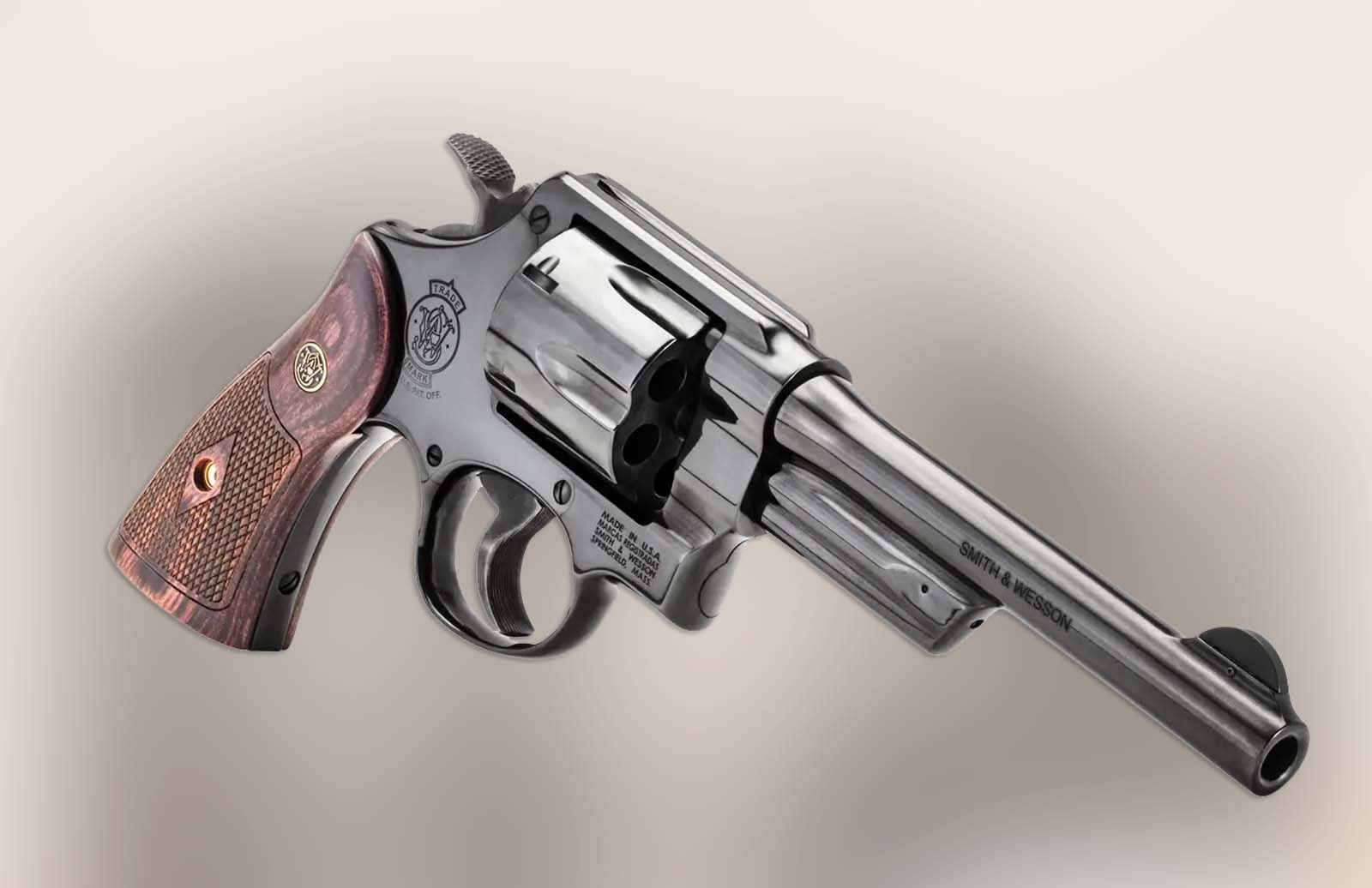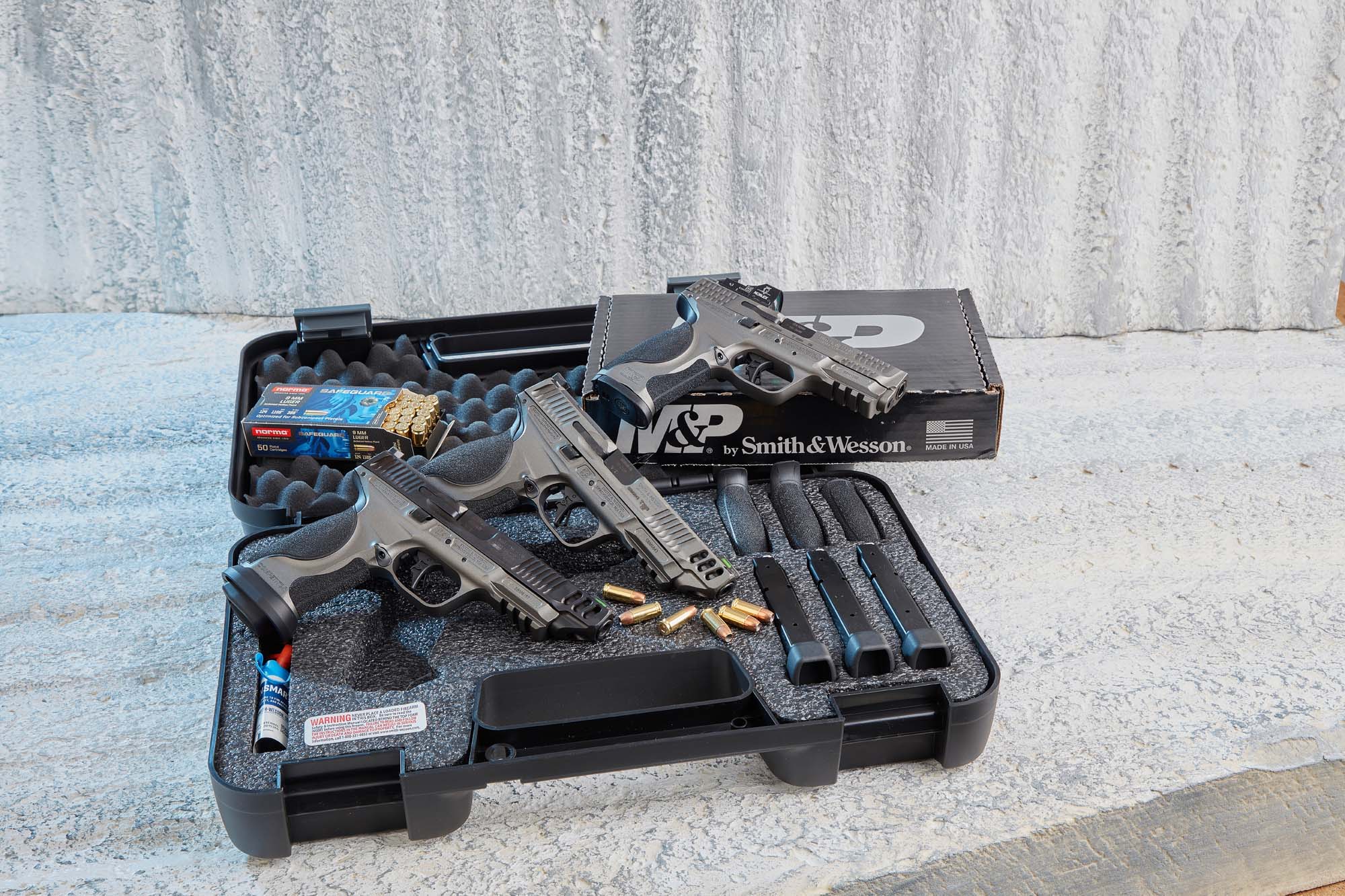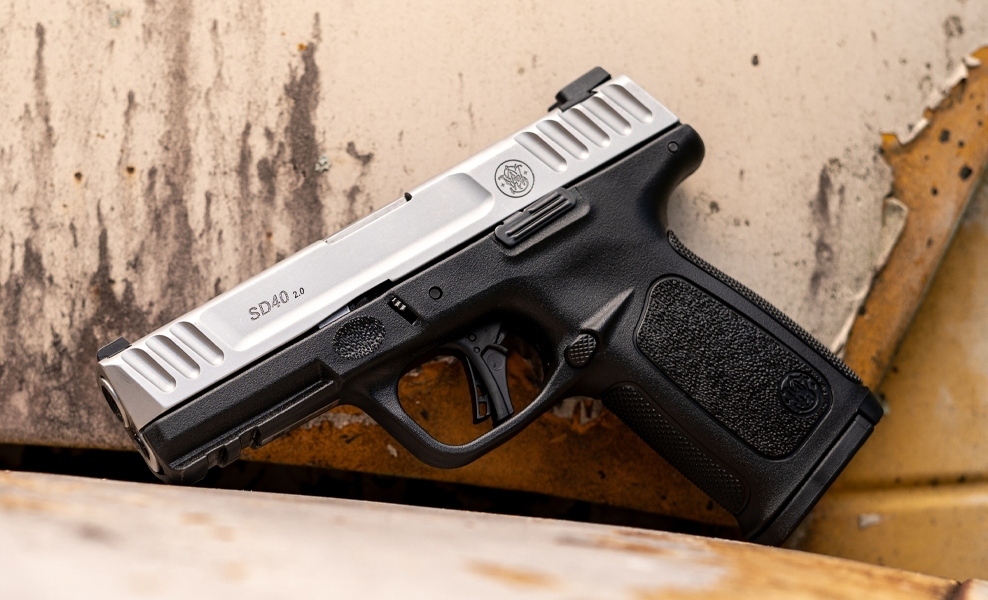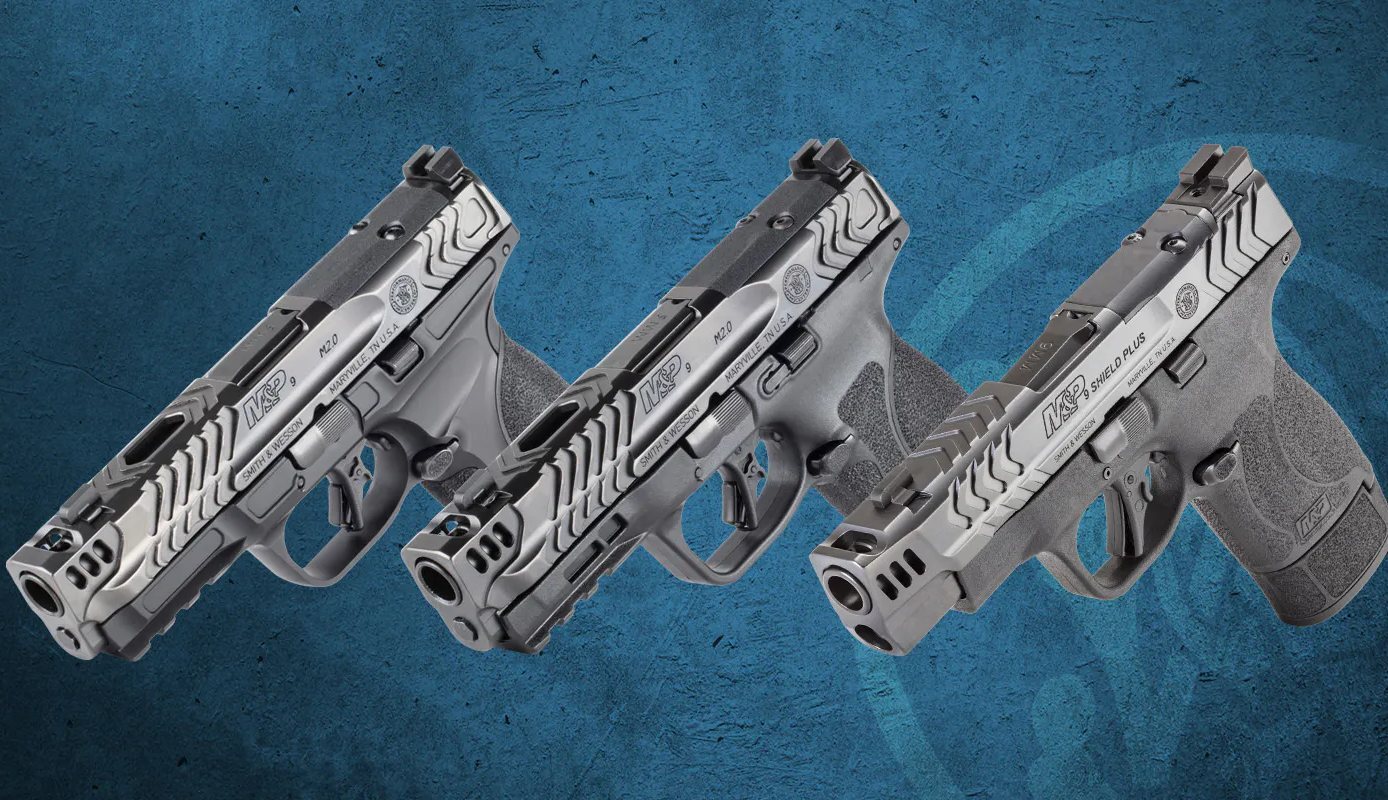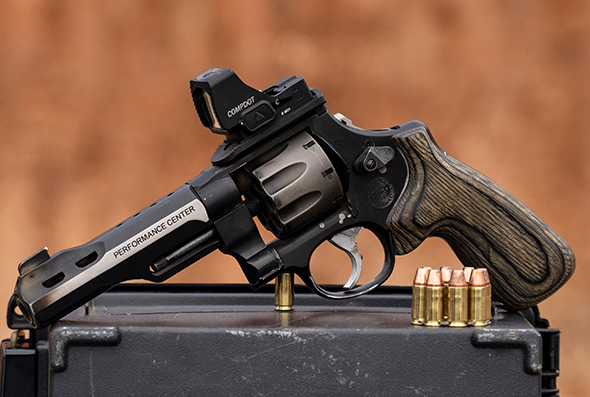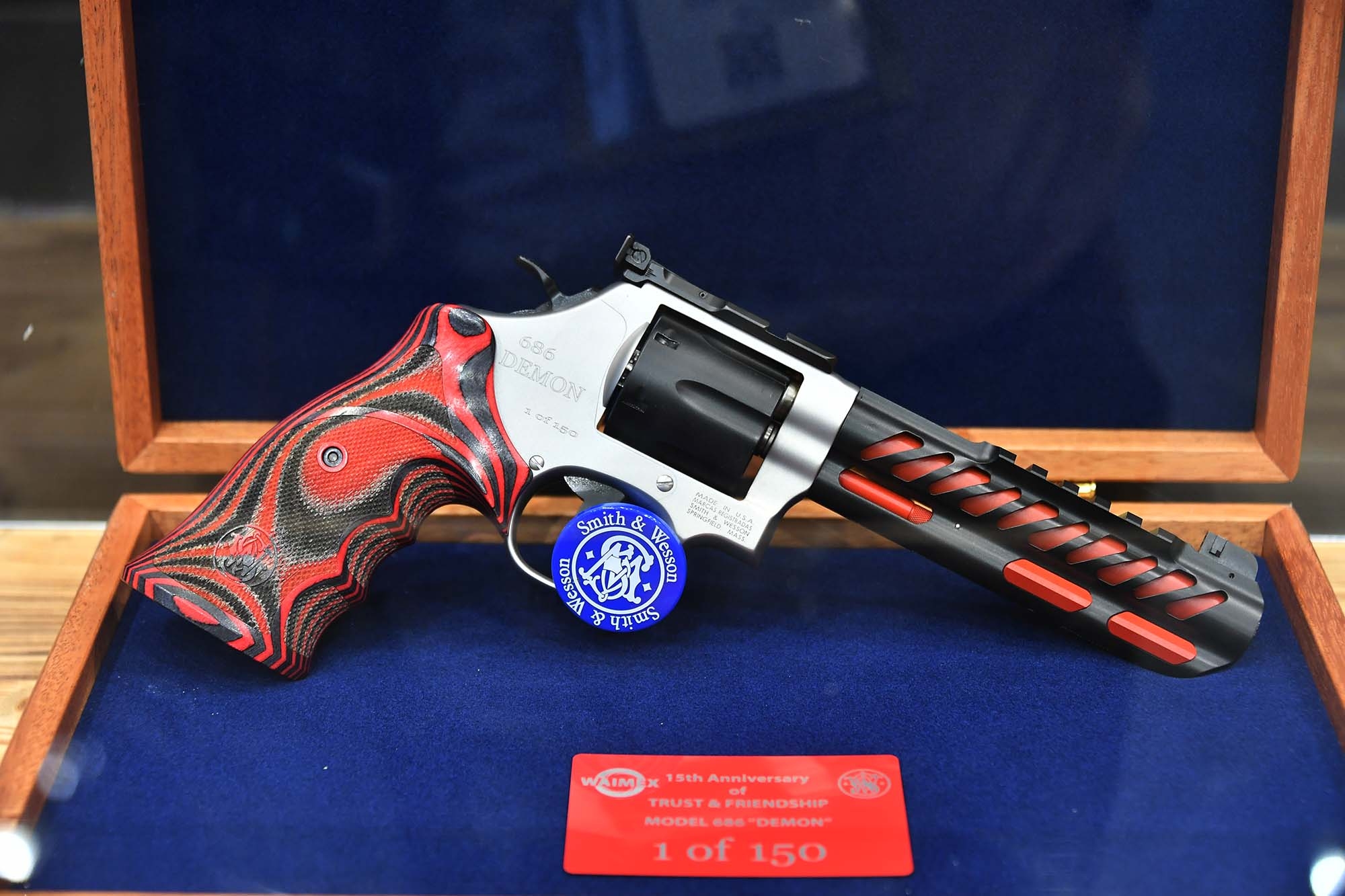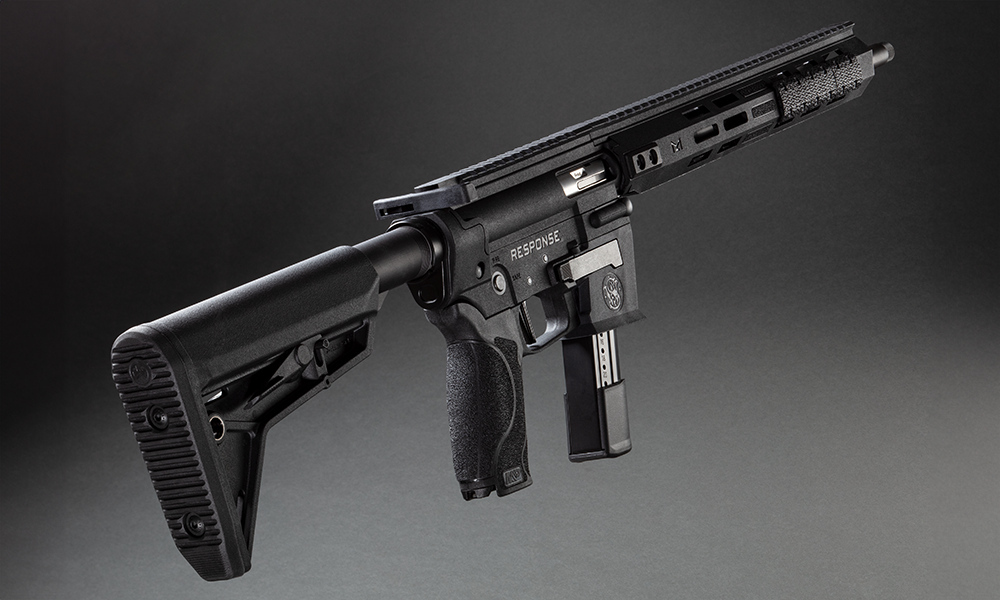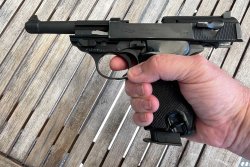
You're probably familiar with the movie scene: an older gentleman, usually just called Q, enters the room and explains to double-O agent James Bond the advantages of his new service pistol: a Walther PPK in 7.65 mm caliber. In the following adventures, it becomes the cinema hero's faithful companion, his trademark, so to speak, by which even his opponents recognize him. "There is only one man who carries a Walther PPK," they even said, in cinematic exaggeration. In reality, the sleek pistol had been on the market for more than thirty years at that point, accompanying law enforcement officers, soldiers and security guards – In Germany, but also abroad, where the first deliveries were made as early as the 1930s.
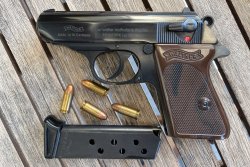
The special highlight of the pleasing pistol was its double action trigger pull. First offered in 1929 together with the Walther PP, the big sister model of the PPK, in a commercially successful self-loading pistol, it allowed the gun to be immediately ready to fire and yet safe to use. "Revolver-like," as it was fondly called in training courses – and as the examiners liked to hear that. The common 7.65 mm Browning caliber was beyond any doubt with regard to its intended use. It was perfectly capable of stopping a fleeing lawbreaker with a shot to the leg, or stopping an attacker with a shot to the chest. How deadly a bullet from a Walther PPK could be was proven a thousand times over, or you could simply believe the statement of the above-mentioned armorer Q: "...like a brick in a window pane!" At Walther the idea of the double action trigger pull – immediate readiness to fire combined with safe carrying of the gun – was also transferred to the new army pistol to be developed for the Wehrmacht of the German Reich. The P38 was the first service pistol in the powerful 9 mm Parabellum caliber to be available with the same safe option of immediate readiness to fire. An idea that was a success. Around 1.3 million P38s were delivered to the Wehrmacht. The German armed forces, the Federal Border Police and the riot police of the German states also relied on the post-war model with an aluminum frame.
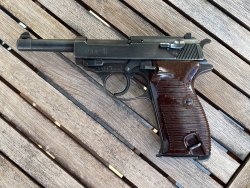
The idea of equipping a self-loading pistol in 9 mm Parabellum with a double action and an aluminum frame was welcomed elsewhere in the world too: at the U.S. firearms manufacturer Smith & Wesson in Springfield, Massachusetts. In the basic design of their gun, S&W followed the well-known Colt M1911 A1 U.S. Army pistol in .45 ACP caliber. The double action, the manual safety and the associated decocking function were based on Walther's P38. The American gunmaker was also happy to take up another idea: to make the frame of the new pistol from aluminum. Walther was already offering the material for the smaller PP and PPK pistols on request as early as the 1930s. There are also said to have been attempts with the P38 for the Wehrmacht. However, the aluminum grip P38 was not mass-produced until the Federal Republic of Germany – as standard, because the steel frame remained the rare exception from then on.
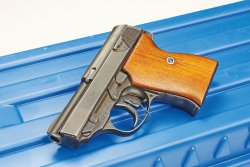
With its Model 39, which had been in development since 1949, Smith & Wesson had thus combined design elements from the United States and Germany. In addition, the gun was also supplemented with modern and lightweight material. After early attempts with a steel frame, Smith & Wesson used aluminum here. The company's focus was clearly on the government market, or more specifically, the military market. At the time the idea was to replace the large and heavy M 1911 A1, which only featured a single action trigger pull. However, the U.S. military could not bring itself to introduce the newly developed pistol. Law enforcement agencies in the USA also took a long time to adopt it. What did slowly emerge, however, was a robust civilian market. The new pistol was well received, and gun enthusiasts were eager to buy it. Not only in the U.S., but worldwide. This included Germany, where, however, the high exchange rate of the U.S. dollar had a dampening effect in the early years. Also often purchased was the Walther P38, which was available as a WW2 second-hand gun at moderate prices or could be purchased brand-new.
The double-action and the 9mm Para caliber made the Walther P38 and the S&W M39 a success
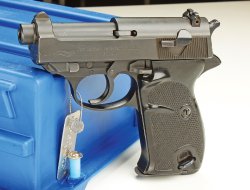
What made the guns successful? It was certainly the combination of double action and cartridge. The 9mm Parabellum had been introduced in 1902. With the German armed forces' Pistole 08, it became firmly established in Europe. By World War II at the latest, it was used as the cartridge for army pistols and submachine guns against other calibers widely used in Europe. War experience showed that even in hand-to-hand combat at close range, a lot of power is required to immediately incapacitate the enemy. So it was more or less obvious to choose a caliber that had proven itself. There were no great variations in the mid-1960s. Full metal jackets were standard, and partial jackets were also available. The latter, however, were not entirely unproblematic in terms of functional reliability. Ammo was also relatively cheap to get – mass production for the military worldwide made that possible.
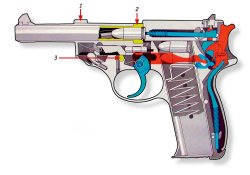
The P38 was also helped by the aura of a successful war record. The pistol, which was not officially introduced to the Wehrmacht until 1940 after intensive testing and a large number of detail modifications, was considered reliable. Because of its straight-recoiling barrel and simple hinged locking piece, it was considered to be less susceptible to loads of different power. Even cartridges with steel cases could usually be fired without any problems. After the war, this fact certainly helped the Bundeswehr and the Federal Border Guard to rely on the proven pistol. A few years after the Carl Walther company, which had moved to Ulm, resumed production in 1957, the P38 also became available for the civilian market. The Smith & Wesson Model 39 pistol was available on the civilian market from 1955. However, sale figures did not get a significant boost until a U.S. law enforcement agency made it its new service weapon. Until then, S&W's M39 remained more of an exception among the military and police – mostly limited to use by special forces.
| Manufacturer: | Smith & Wesson |
| Model: | M39 |
| Caliber: | 9mm Luger (aka 9mm Parabellum, 9mm Para, 9x19) |
| Capacity: | 8 + 1 cartridges |
| Dimensions (LxWxH): | 192x33x136 mm |
| Barrel Length: | 102 mm |
| Sight Radius: | 150 mm |
| Rear Sight Notch: | 3.27 mm |
| Front Sight Width: | 3.2 mm |
| Trigger Pull Weight (SA/DA): | 1400 g /4500 g |
| Weight: | 790 g |
| Price: | n/a (used gun) |
| Features: aluminum frame, Browning locking system, blued
slide, DA/SA with safety/decocking lever, drift adjustable rear sight. | |
Compared to other self-defense pistols of their time, the Walther P38 and the S&W M39 stand out for their size
What set both the P38 and the Model 39 apart from the mass of civilian self-defensepistols in those days were the huge size of the two guns. The Smith & Wesson pistol is 192 mm long, 136 mm high and 33 mm wide. Thanks to the use of an aluminum frame, the gun's weight is 790 g. The dimensions of the P38 are even more lavish: 216 mm overall length, 138 mm height and a maximum width of 37 mm, measured at the safety/decocking lever. The Walther's frame made of Dural light alloy also brings weight advantages. At 780 g, the P38 from civilian post-war production is 170 g lighter than the military P38 of World War II with a steel grip.
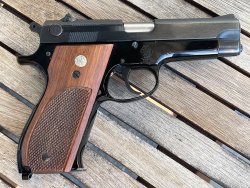
For comparison, the dimensions of the Walther PPK, which at the time was considered the self-defense pistol par excellence: 155 mm length, 26 mm width and a height of 111 millimeters when using the extended magazine (107 millimeters with the flush magazine base made of sheet metal). The weight of the PPK in 7.65 mm was 590 g. Those who wanted it lighter could optionally buy the PPK-L with an aluminum frame. The advantage of the Dural used here as well was an unloaded weight of 480 g. What the comparison of the bare figures can hardly convey, however, is the impression in reality. The Model 39 and P38 come across as massive and bulky. They are without a doubt large pistols. And they are not necessarily pistols made for concealed carry. When Walther designed the successor to the 08 Pistol in the 1930s, army pistols were carried on the belt in a holster made of sturdy leather. With it came a spare magazine and small multi-purpose tools. The P38 could do without the tools, but the pouch made of strong leather with a compartment for the spare magazine was still used. Even though the Wehrmacht over the course of the war switched to simpler pistol holsters, the overall package remained impressive in size. The M39 was not quite so huge.
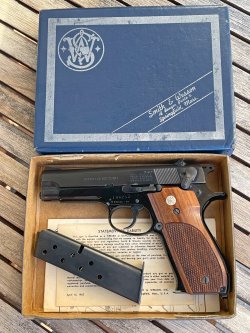
The holsters used by the U.S. Army did not completely enclose the weapon, nor did they typically have a compartment for the spare magazine. These were instead carried in their own pouch, allowing the loads to be spread somewhat. Holsters intended for police use also did not have a compartment for the spare magazine. However, they were not small either. In keeping with the appearance of a U.S. policeman at the time, revolvers and pistols were worn visibly on the belt – as a sign of state power. Such solutions were not suitable for civilian use. Carrying a large pistol in a holster visibly above one's clothing was at best conceivable in the field of hunting, but even there it was not really appreciated. Suitable holsters for carrying these large pistols on the belt under the outer clothing therefore first had to be developed. Due to the limited demand, the supply was also initially meager. Nevertheless, they did exist: there were simple belt holsters for large pistols, some even with a spring clip, shoulder holsters in which the large handguns could be accommodated, and there were cross draw holsters. Such a holster for the Walther P38 even found a cinematic appreciation. In Dirty Harry (1971), a shopkeeper clearly carries a P38 in such a holster – as protection against robberies. The fact that he is then attacked precisely because of his pistol was probably more than a whim of the screenwriter. Sometimes the surprise effect of a concealed carried gun is better than the deterrent effect of a visibly carried one.
Trend-setting, scaled-down versions of both the Walther P.38 and the S&W M39 are developed
Over time, this initially created a passable range of usable holsters for concealed carry of larger guns. But the pistols also underwent changes to make them more usable as self-defense guns. This included detailed improvements to the trigger, sights, and grips, as well as downsizing the firearm. Detlev Joniskeit offered compact pistols based on the Walther P38 for self-defense. The American company Devel trimmed the Smith & Wesson Model 39 to a much manageable size. Eventually, the major firearms manufacturers took up the idea of compact DA/SA pistols in 9 mm Luger themselves: Walther somewhat half-heartedly at first with the P38 short, S&W quite ambitiously with the Model 469 Minigun. The compact models thrived on the myth of the large standard versions and remained in principle large pistols despite their more manageable size.
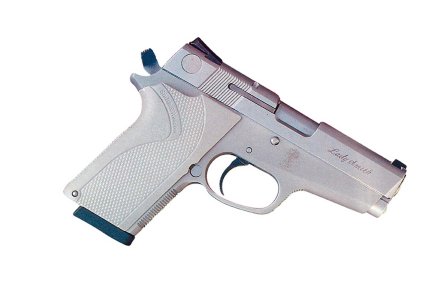
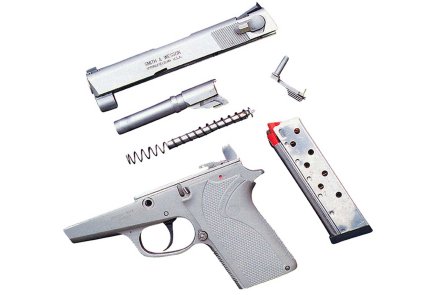
Information on the current self-defense pistols and other guns from the two manufacturers discussed here can be found respectively on the Carl Walther and Smith & Wesson websites.



